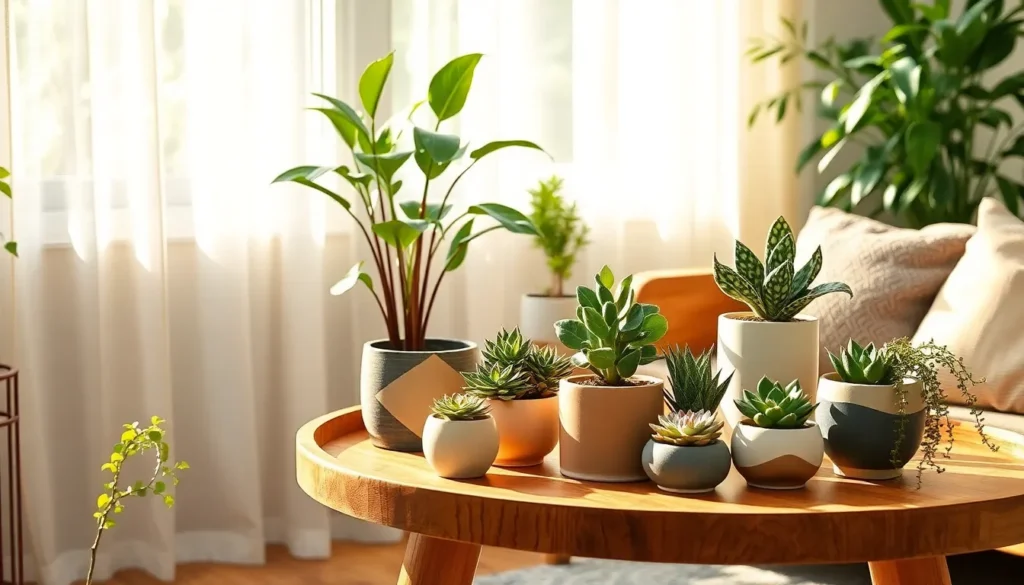Welcome to the delightful world of indoor gardening, where the joy of nurturing life is accessible to everyone, regardless of experience. Whether you’re a beginner eager to bring a touch of nature into your home or an experienced gardener seeking low-maintenance companions, the right plants can transform your living space and lift your spirits.
Indoor plants do more than just beautify your home; they purify the air, improve your mood, and connect you to nature’s calming rhythms. In this article, we’ll explore ten delightful indoor plants that are not only easy to care for but also forgiving of occasional neglect, making them perfect for busy lifestyles and budding green thumbs alike.
As you journey through the following pages, you’ll discover a diverse selection of plants, each with its unique charm and minimal care requirements. From the resilient snake plant to the charming pothos, you’ll find options that breathe life into every room.
Introduction to Beginner-Friendly Plants

Starting with easy-to-care-for plants can boost a beginner’s confidence and create a thriving indoor garden. These plants typically require minimal watering and can tolerate a range of light conditions, making them ideal for those new to gardening.
Consider the peace lily, known for its lush foliage and white blooms, which thrives in low to medium light. Water it only when the top inch of soil is dry, and ensure it is planted in well-draining potting mix to prevent root rot.
Another beginner-friendly option is the snake plant, which is incredibly hardy and can survive in various environments. It prefers bright, indirect light but can adapt to lower light levels, needing water only every two to six weeks.
For those looking for a pop of color, the pothos plant is an excellent choice, with its vibrant green and variegated leaves. Place it in indirect sunlight and allow the soil to dry out between waterings, ensuring it remains healthy and vibrant.
Understanding Low-Maintenance Benefits
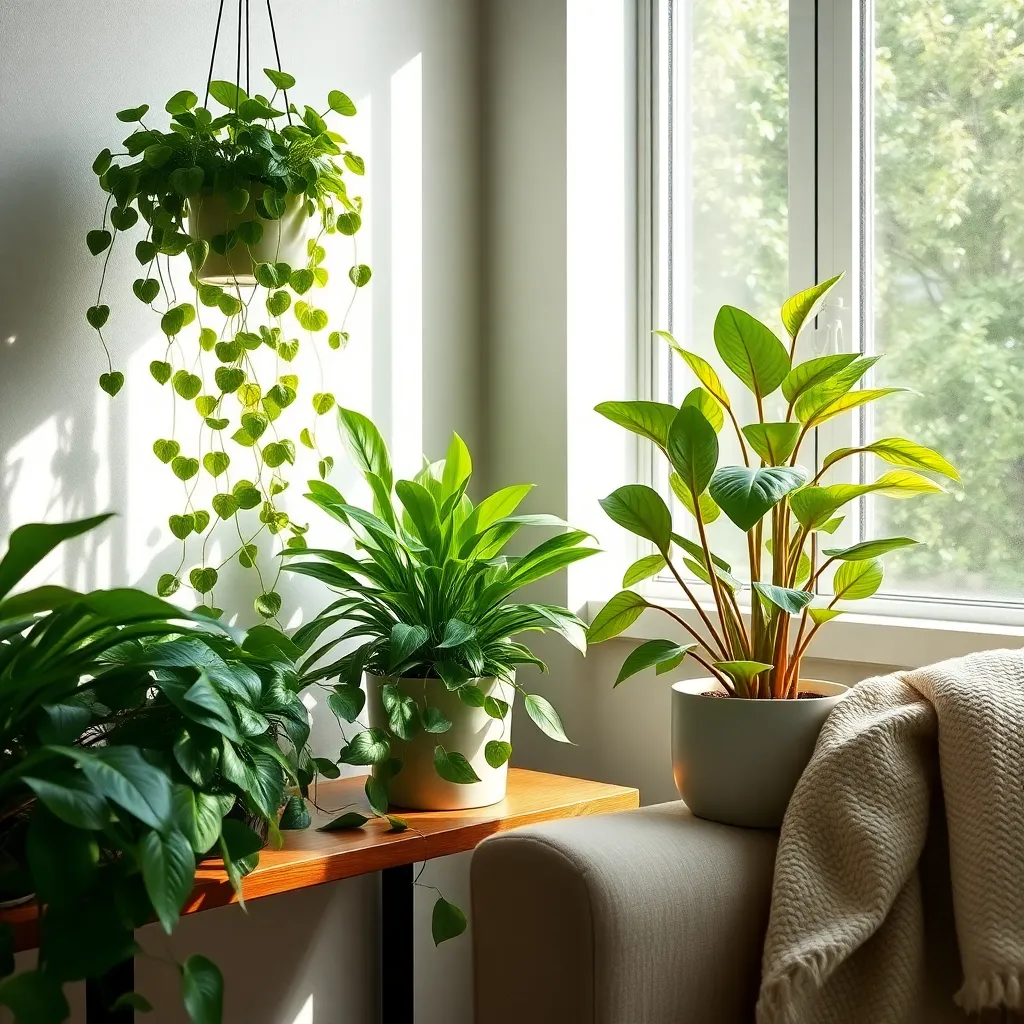
Choosing low-maintenance indoor plants is an excellent way for beginners to build confidence while enjoying greenery at home. These plants typically require less frequent watering and can thrive in a variety of lighting conditions, making them perfect for busy lifestyles.
For those new to gardening, it’s important to select plants that can tolerate some neglect. Plants like Snake Plant and ZZ Plant are forgiving and can survive under infrequent watering schedules, requiring watering only once every 2-3 weeks.
Consider the light requirements of your chosen plants to ensure they thrive in your specific home environment. While some plants, such as Pothos, can adapt to low light, others like Aloe Vera will need bright, indirect sunlight to flourish.
Soil choice plays a crucial role in the success of low-maintenance plants. Use a well-draining potting mix, which helps prevent root rot—a common issue with overwatering. Incorporating perlite or coarse sand can improve soil drainage, enhancing plant health.
Advanced gardeners can experiment with self-watering pots to further reduce maintenance needs. These pots help regulate moisture levels, ensuring plants receive consistent hydration without the risk of overwatering.
Choosing the Perfect Indoor Spot
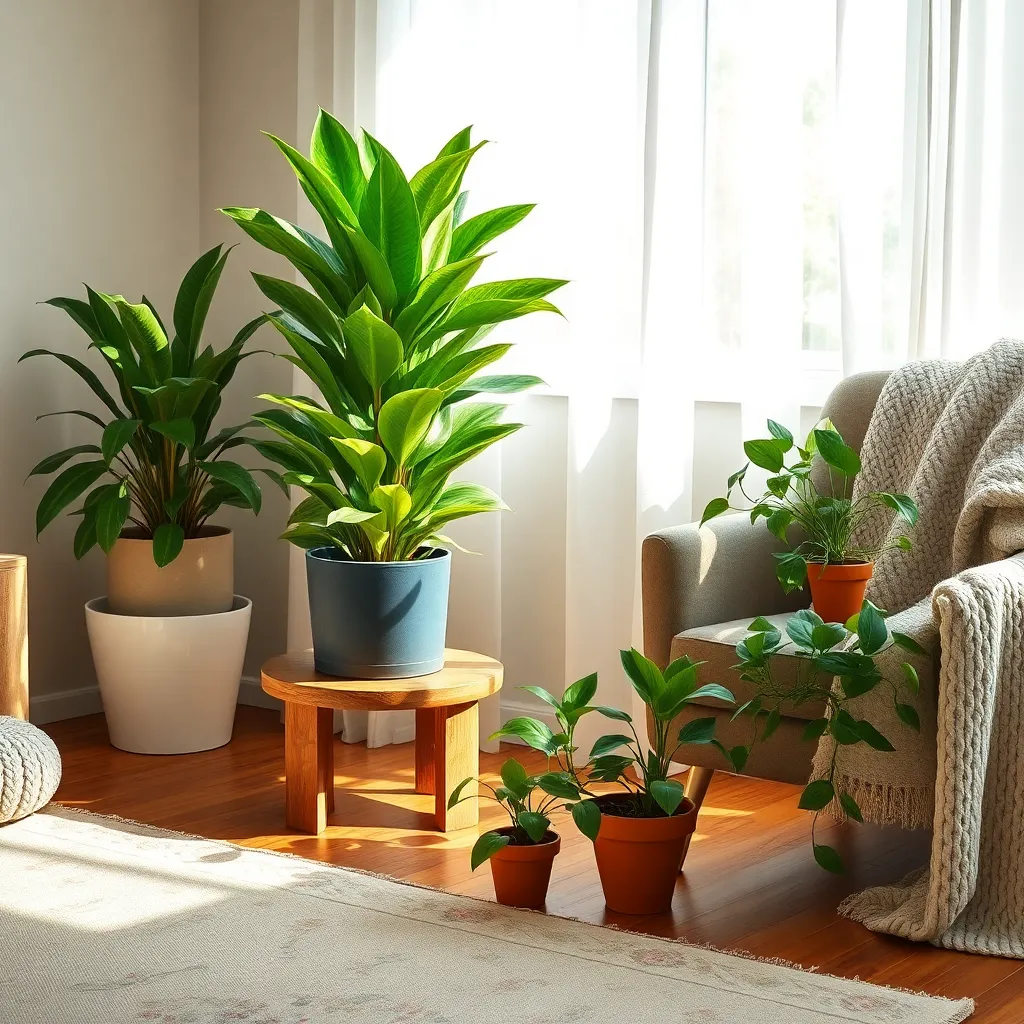
Locating the perfect spot for your indoor plants is crucial for their health and vitality. Consider the natural light available in your home, as most low-maintenance plants thrive with bright, indirect light.
To ensure your plants receive adequate light, place them near windows that receive morning sun, which is gentler. If direct sunlight is unavoidable, use sheer curtains to diffuse the harsh rays, preventing leaf scorch.
Humidity is another important factor when selecting a spot for your plants. Grouping plants together can naturally increase the humidity around them, which is beneficial for species like ferns and peace lilies.
For those with more experience, consider using a humidity tray or a small humidifier in drier environments. Additionally, keep plants away from drafts or heat sources like vents and radiators, as these can dry out foliage quickly.
Top Low-Care Plant Varieties
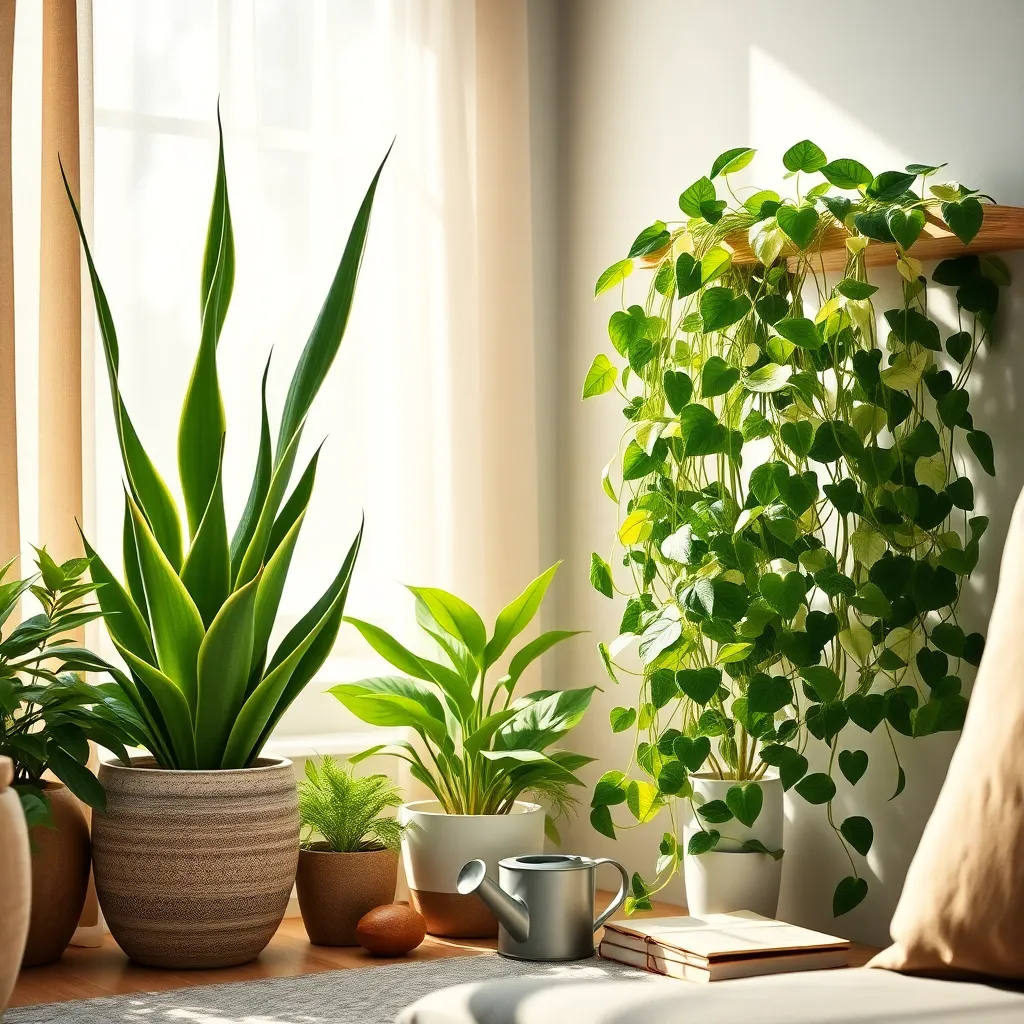
One of the best low-care plant varieties is the Snake Plant, known for its ability to thrive in low light. Water this plant sparingly, allowing the soil to dry out completely between waterings to prevent root rot.
Another excellent choice is the ZZ Plant, which is highly drought-tolerant and can withstand neglect. Use a well-draining potting mix and place it in indirect light to keep it healthy and vibrant.
Pothos is a favorite among beginners due to its adaptability and ease of care. Ensure to keep the soil slightly moist but not soggy, and provide bright, indirect sunlight to promote lush growth.
Consider the Peace Lily if you desire a plant that signals its needs; it wilts when thirsty. Provide ample humidity and place it in a spot with filtered light to encourage its distinctive blooms.
Essential Tools for Plant Care
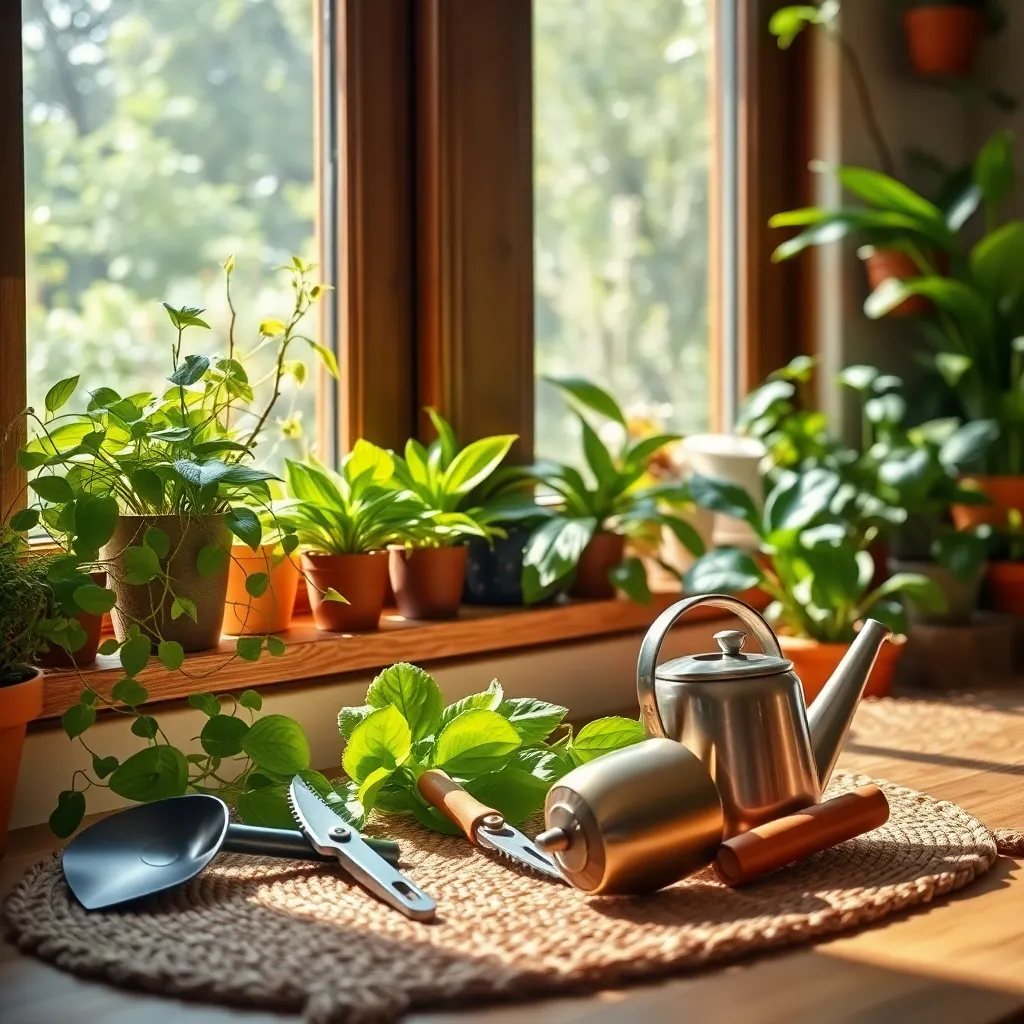
To successfully care for your low-maintenance indoor plants, having the right tools is essential. A basic set of tools will not only simplify your gardening tasks but also ensure your plants thrive under your care.
A reliable watering can with a narrow spout is crucial for directing water to the soil without over-soaking the foliage. Consistent watering helps prevent issues like root rot, which is a common problem for beginners.
Investing in a pair of sharp pruning shears can make a significant difference in maintaining plant health. Regular pruning encourages growth and helps remove any dead or yellowing leaves that may harbor pests or diseases.
For those looking to elevate their plant care skills, a moisture meter can be an invaluable tool. This device helps you determine when to water by measuring the moisture level in the soil, ensuring you never overwater or underwater your plants.
Consider getting a small hand trowel for repotting tasks and mixing soil. When repotting, use a well-draining potting mix suitable for your plant type to promote healthy root growth.
For more advanced care, a fertilizer applicator can help you apply nutrients effectively. Choose a balanced, water-soluble fertilizer and follow the recommended dosage to avoid over-fertilization, which can harm your plants.
Finally, a pair of gardening gloves can protect your hands while working with soil and plants, ensuring comfort and safety. This simple addition to your toolkit can make a world of difference, particularly when handling spiky or thorny plants.
Simple Watering Tips for Success
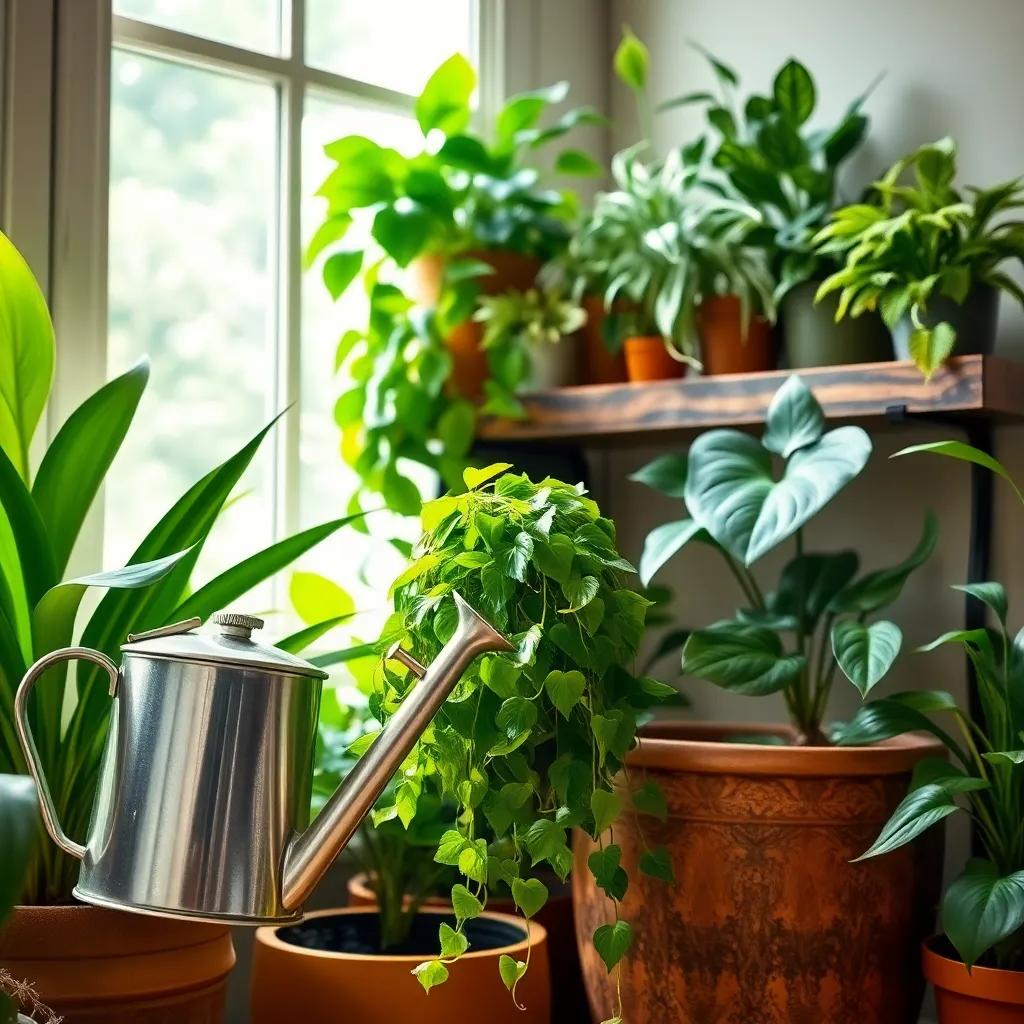
When it comes to watering indoor plants, less is often more. Overwatering is a common mistake that can lead to root rot, so always ensure your pots have drainage holes to allow excess water to escape.
To determine if your plant needs water, stick your finger about an inch into the soil. If it feels dry, it’s time to water; if it’s still damp, wait a few more days.
Using the right type of water is also important. Many indoor plants prefer distilled or rainwater because tap water can contain chemicals like chlorine that may harm them over time.
Incorporate a watering schedule that suits the specific needs of your plants. For example, succulents generally thrive with a watering every two weeks, while ferns might need watering weekly.
Consider the plant’s environment when deciding how often to water. Plants in brighter, warmer areas may require more frequent watering than those in cooler, shadier spots.
For advanced care, grouping plants with similar watering needs can make maintenance easier. This practice ensures each plant receives the right amount of moisture without overwatering or underwatering.
Lighting Needs for Indoor Plants
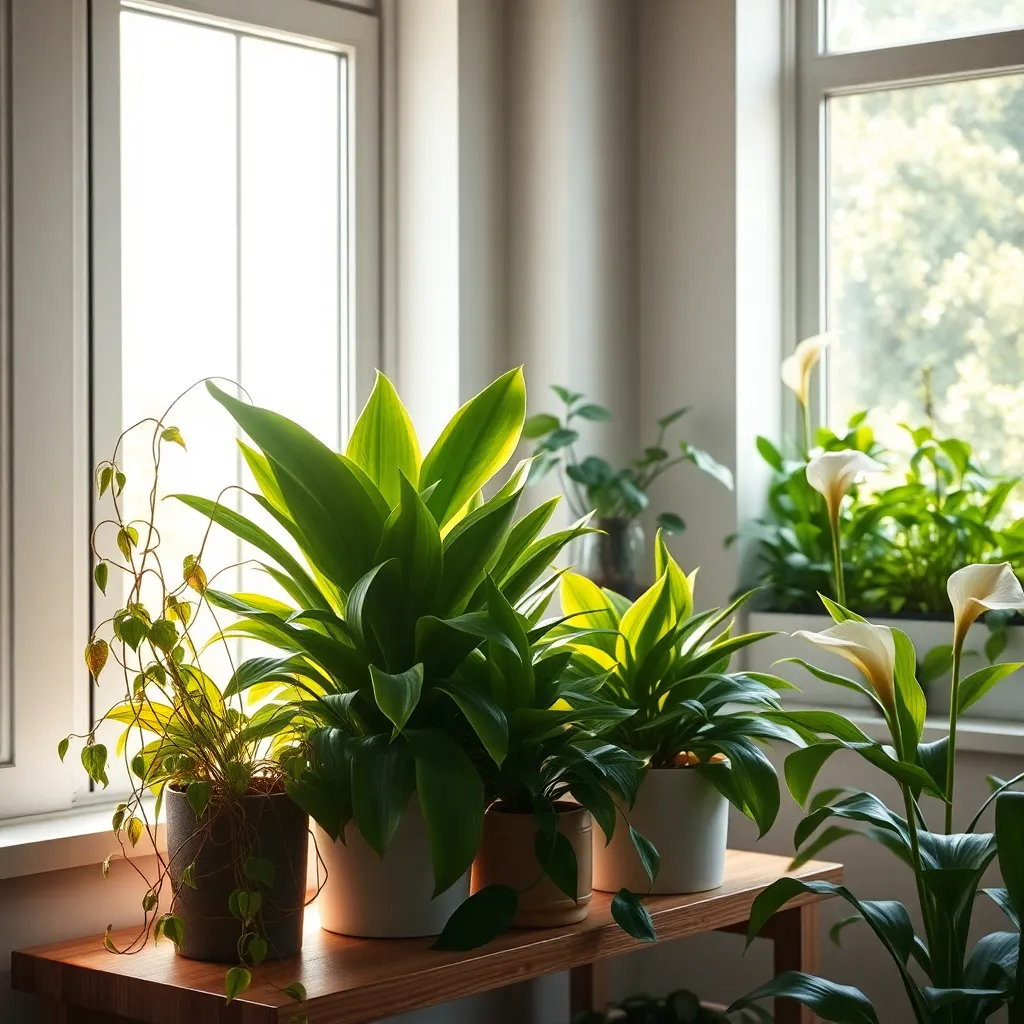
Understanding the lighting needs of your indoor plants is crucial for their growth and well-being. Most low-maintenance indoor plants thrive in indirect light, making them perfect for beginners who may not have optimal lighting conditions.
To assess the lighting in your space, observe how the sunlight moves throughout the day. Place your plants near windows that receive bright, filtered light for the majority of the day, as this mimics their natural habitat.
For spaces with limited natural light, consider using supplemental grow lights to provide the necessary illumination. LED grow lights are energy-efficient and can be adjusted to provide the specific light spectrum that plants need to thrive indoors.
Some plants, like pothos and snake plants, can tolerate lower light levels, making them ideal for dimly lit areas. However, avoid placing any plant in complete darkness, as all plants require some light to photosynthesize and grow.
Common Pests and Easy Solutions
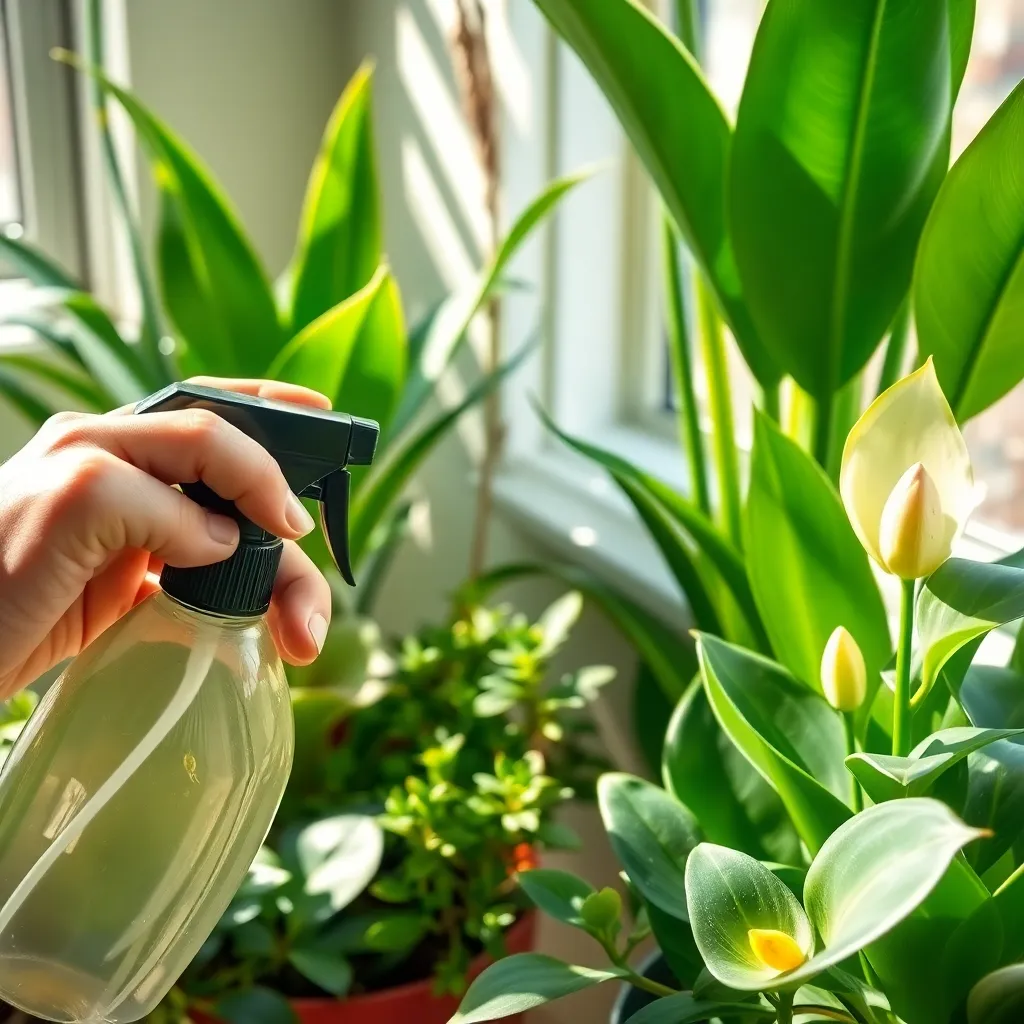
Indoor plants, while generally easy to care for, can sometimes fall prey to common pests. Aphids, spider mites, and mealybugs are frequent visitors you might encounter. These pests are often attracted to the tender new growth and can multiply quickly if not managed promptly. Regularly inspecting your plants is key to catching these intruders early and preventing larger infestations.
To tackle these pests effectively, start by isolating the affected plant to prevent spread. Use a gentle spray of water to dislodge small infestations of aphids or spider mites. For more stubborn cases, apply a solution of neem oil mixed with water, which acts as a natural insecticide and disrupts the life cycle of these pests. This solution is safe for most plants and the environment, making it a gardener’s ally.
If mealybugs are your issue, they may need a more targeted approach. Dip a cotton swab in rubbing alcohol and gently dab it on the mealybugs to dissolve their protective coating. Repeat this process weekly if necessary, ensuring you cover all affected areas. Consistency is vital, and combining this with regular wiping of leaves can help keep your plants pest-free.
For those looking to prevent pest issues altogether, maintaining plant health is your first line of defense. Ensure your plants are not overwatered, as soggy soil can invite pests and diseases. Use a well-draining potting mix to avoid waterlogged roots, and allow the soil surface to dry out between waterings to create an unfavorable environment for pests.
Repotting Basics for Beginners
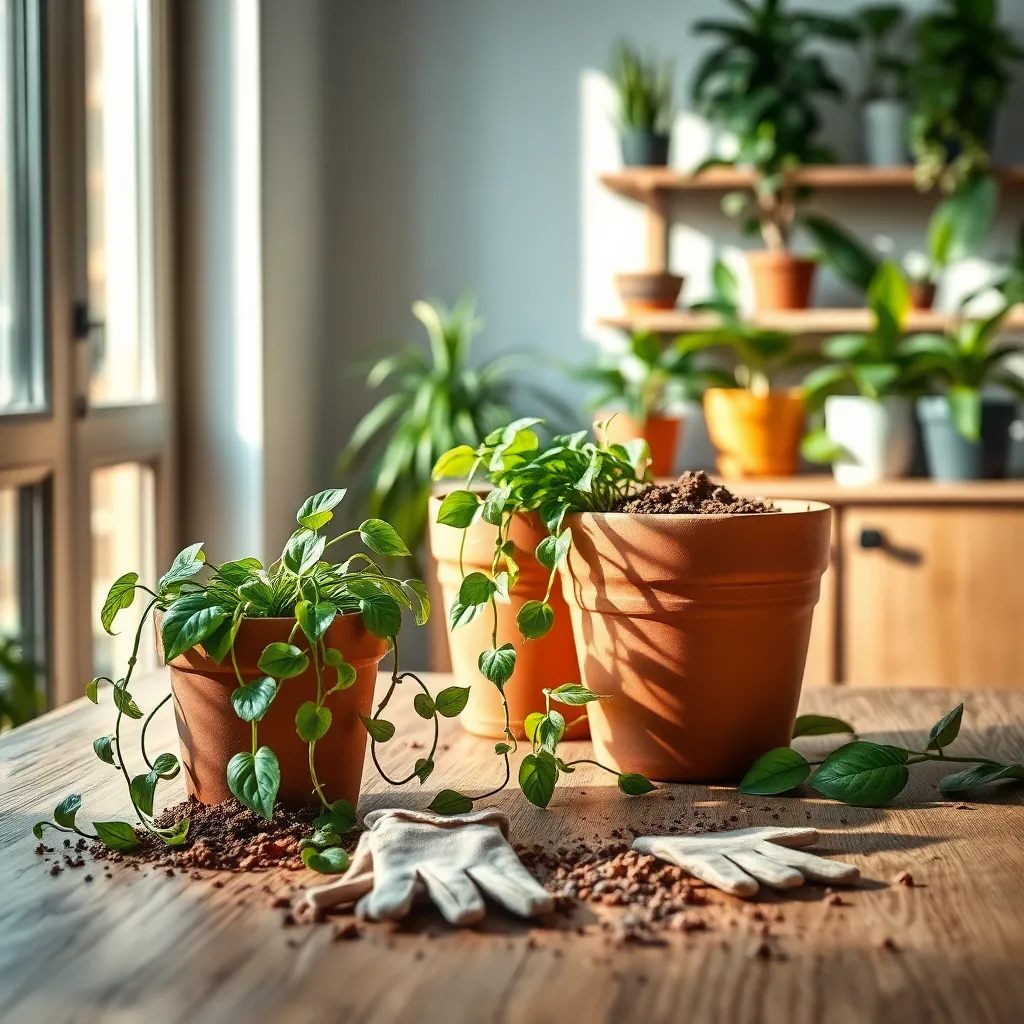
Repotting is an essential part of plant care that ensures your indoor plants continue to thrive. It’s often time to repot when roots start to circle the pot or grow out of drainage holes.
Begin by choosing a pot that is one size larger than the current one to give roots room to grow. Make sure the new pot has adequate drainage holes to prevent waterlogging.
Use a fresh potting mix that suits the specific needs of your plant; for instance, a well-draining soil mix is crucial for succulents. Consider adding perlite or sand to improve drainage for plants that prefer drier conditions.
Before repotting, gently remove the plant from its current pot, taking care not to damage the roots. Loosen any tightly bound roots with your fingers, which helps them spread in the new soil.
Place a layer of fresh soil at the bottom of the new pot, then position your plant at the same depth as it was in the old pot. Fill the remaining space with potting mix, pressing gently to eliminate air pockets.
After repotting, water the plant thoroughly to help the soil settle around the roots. Allow the plant to adjust to its new environment by placing it in a location with the appropriate light conditions for a few days before resuming regular care.
Long-Term Care and Enjoyment
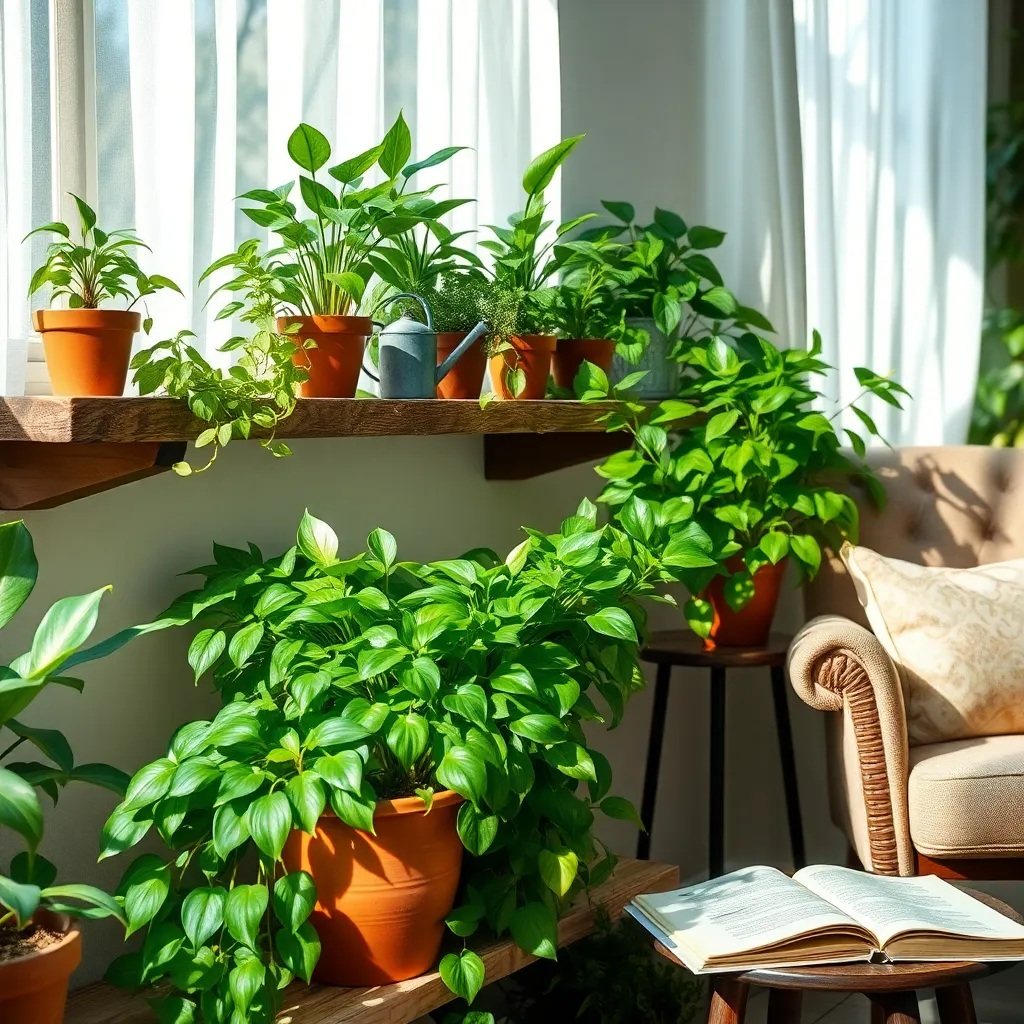
To ensure your indoor plants thrive long-term, it’s crucial to establish a consistent care routine. Regularly check your plants for signs of stress, such as yellowing leaves or wilting, which may indicate a need for adjustments in care.
Watering is a key aspect of plant health, but overwatering is a common mistake. Most low-maintenance indoor plants prefer their soil to dry out partially between waterings, so it’s helpful to use your finger to check soil moisture an inch below the surface.
Light conditions also play a significant role in plant care. While some plants, like the snake plant and pothos, tolerate low light, others will benefit from bright, indirect sunlight to enhance their growth and vibrancy.
To keep your plants looking their best, dust their leaves occasionally. Dust can block sunlight and reduce photosynthesis, so gently wiping leaves with a damp cloth every few weeks can promote better plant health.
If you want to boost your plant care skills, consider using a balanced, water-soluble fertilizer during the growing season. Apply it once a month to provide essential nutrients that help your plants flourish, but be cautious not to over-fertilize, as this can damage roots.
Conclusion: Growing Success with These Plants
In exploring the world of low-maintenance indoor plants, we’ve uncovered how nurturing relationships can be as simple as caring for a Snake Plant or a resilient ZZ Plant. Just as the Peace Lily thrives with minimal fuss, so can a relationship when mutual respect and understanding are prioritized. The forgiving nature of the Spider Plant mirrors the importance of flexibility and forgiveness in partnerships, while the Pothos reminds us that growth is possible even in low-light times. Like the Jade Plant’s enduring leaves, consistency and small acts of kindness build a strong foundation. The Aloe Vera’s healing properties echo the necessity of emotional support, and the Philodendron’s adaptability teaches us to embrace change together. The hardy Cast Iron Plant exemplifies resilience, and the calming Lavender Plant shows the power of peace and tranquility.
Why not start today by introducing one of these plants into your shared space, symbolizing your commitment to growth? Bookmark this article now to revisit these nurturing insights whenever you need a relationship boost. Remember, cultivating love and connection is a journey, and with each small step, you’re paving the way for a flourishing future together. Let’s plant the seeds of love and watch them blossom!

